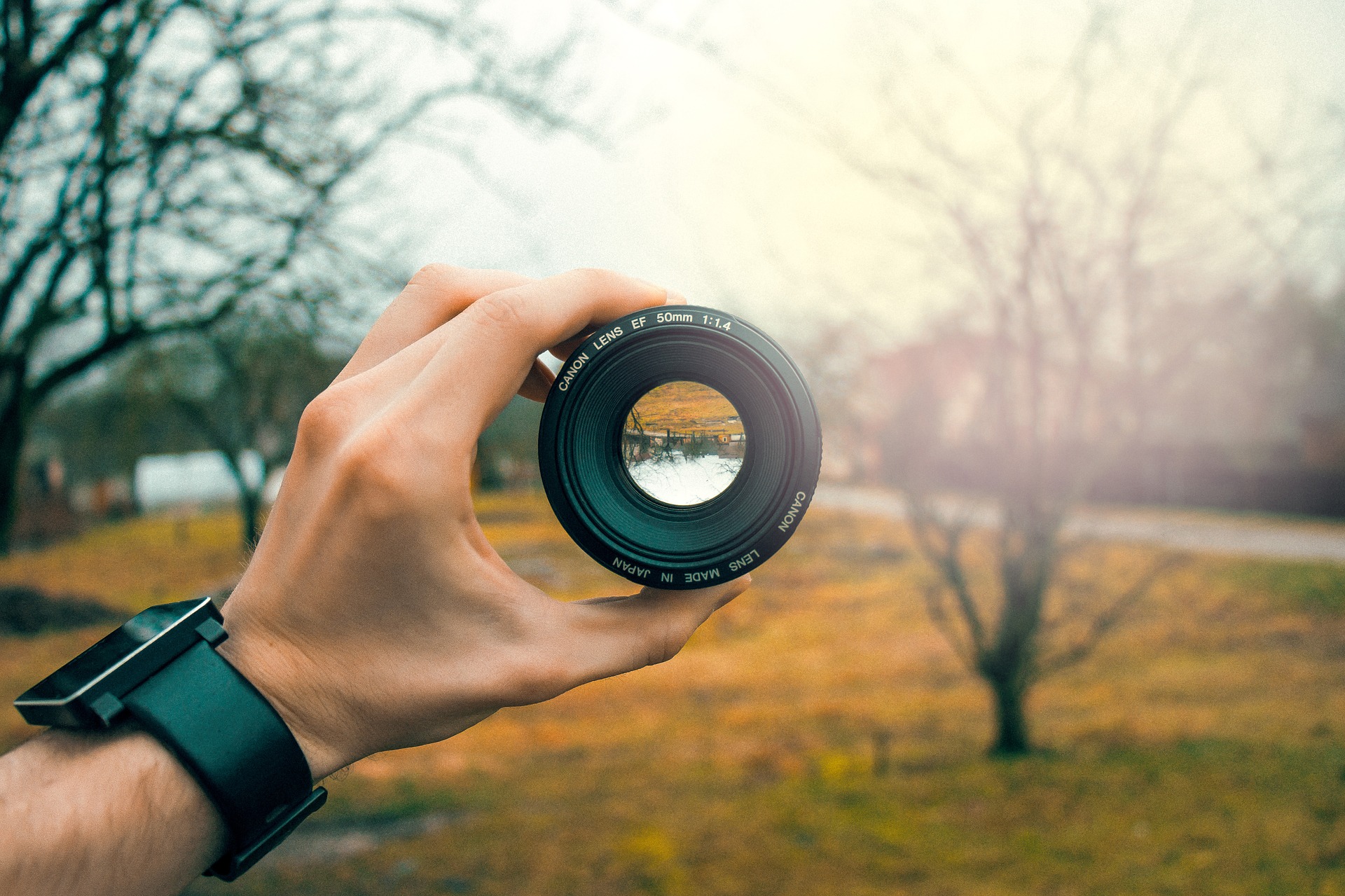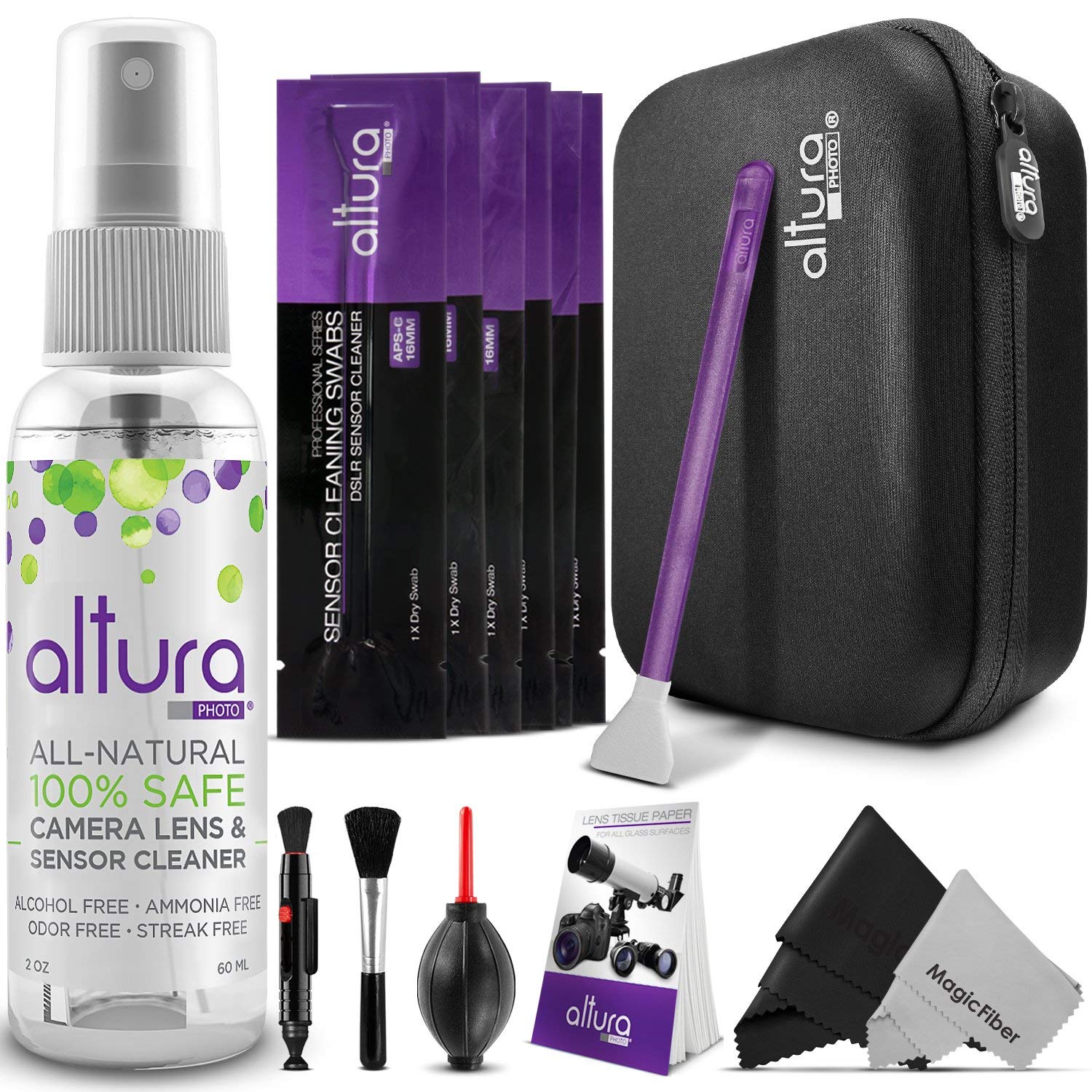If you own a camera, you’ll need to keep on top of cleaning it to keep it in tip-top condition.
However, incorrectly cleaning it can lead to damage. No matter how careful you are with your photography equipment, dust and debris will inevitably enter it. Therefore, we’ve provided some basic, easy-to-follow tips and helpful products to learn how to clean a camera lens effectively.
A Bit About Cleaning a Camera Lens
If you’re looking to branch into photography, it’s important that you understand camera lenses. Knowing their purpose and importance of cleaning them is essential for long-lasting enjoyment from your equipment.
What Is the Purpose of a Camera Lens?
Camera lenses add creative control to digital photography. By choosing the right lens for the task, you can highly improve the image quality. However, there are numerous factors to consider relating to camera lenses. For example: image quality, focal length, perspective, prime vs. zoom lenses and aperture. A camera lens has a variable focal length. This is so the camera moves can be made without actually moving the camera. Therefore, by adjusting the lens function and lens itself, you can create different effects.
Camera lenses give photography a unique finish and shape the manner in which you perceive an image. The most important characteristic of a lens is the focal length. This means the distance between the lens’ optical center and the camera’s image sensor when in focus mode. The focal length is usually displayed on the lens barrel, along with the size of the adapter ring.
Why is it Important to Clean It Correctly?
Photography can only be as good as the equipment you use. No matter how careful you are with your camera equipment, it’s natural that dust and debris will occur in your lens and sensor frequently. Not only can dust irritate the camera lens and lead to a potential breakage, but it can negatively affect when showing HDR photography.
Specifically, noise is amplified by images stacking on top of one another. The more noise in the image, the less detail you’ll see. Consequently, if there’s heaps of dust and debris, it’ll ruin the image’s quality and detail. However, this might not be noticeable as you look into the camera lens. But, when you amplify your final HDR image, you’ll notice the flecks of dust and debris. This’ll inevitably ruin the quality of your images.
In addition, learning how to clean a camera lens correctly will limit the amount of time and effort you have to put into post-production. As we spoke earlier, dust and dirt will be amplified in your final image. As a result, this decreases the quality of your final image. In order to rectify this poor quality, you’ll need at least 30 minutes to edit and fix the image to your liking.
How Often Should You Clean a Camera Lens?
Once you’ve established how to clean a camera lens, you’ll likely consider how often you should do this. Well, depending on the equipment you use to clean a camera lens, it’ll depend on the necessary frequency. If you opt for an air blast, we recommend learning how to clean a camera lens just before you shoot.
On the other hand, a lens pen only requires a clean around once a month. This is an ideal tool for when you’re on the go, because you can whip it out whenever you need it. Every six months, we recommend performing a wet clean for a thorough clean on your camera lens.
Depending on how often you use your camera and how and where you store it, will dictate how often you should clean it. Rather than wait until the camera lens looks dusty and dirty, keep on top of its hygiene to keep it in the best condition possible.
Camera Lens Cleaning Kits
In order to make your life easier, we’ve scoured the Internet to find the best cleaning kits for your camera lens. Rather than relying on household products which aren’t specified to clean your camera, these are.
1. Professional Camera Cleaning Kit for DSLR Cameras
Cleaning a DSLR is a very delicate job, but a professional cleaning kit can make the process much easier. The CamKix professional DSLR cleaning kit offers an array of tools to help you keep your camera and lenses clean and fully functional. The air blower will direct a stream of air to blow away dirt and dust from your lenses or camera sensor. Also, the double-ended pan can be used to gently and accurately remove dust and dirt caught at the edges of the lens or in any small crevices. The carbon cleaning tip of this pen will remove fingerprints and grease without leaving behind any fibers or debris. The spray bottle is empty so that you can fill and refill the bottle with the cleaning solution of your choice.
2. Altura Photo Professional Cleaning Kit for APS-C DSLR Cameras
This Professional Cleaning Kit by Altura Photo combines all the necessary tools to keep your camera, lens, and sensor free from dust, dirt, and smudges. It’s also neatly packed inside a hard-shell zippered travel case. By having these tools with you at all times, you will notice a huge improvement in the quality of your photos. Six individually wrapped, vacuum-sealed, lint-free sterile fabric sensor cleaning swabs keep your lens clean at all times. Designed specifically for APS-C sensors, they’re delicate, though effective.
3. Movo Deluxe Essentials DSLR Camera Cleaning Kit PRO
This Movo Cleaning Kit contains everything to keep your DSLR camera clean and in perfect working condition, inside and out. Sensor cleaning and maintenance is one of the most important, and most overlooked, aspects of camera ownership. Proper care of your sensor will ensure your camera keeps serving your needs for years to come. Overlook it, and you’ll soon find yourself dealing with annoying specs showing up in your images.
While many cameras feature automatic sensor cleaning, you may find that you require a more thorough cleaning to remove particularly troublesome particles. For times like this, you’ll need to use several specialized tools to address the different types of debris that may be on your sensor’s surface.
How to Clean a Camera Lens
These tips were created to make your cleaning experience easier. Whenever necessary, apply this steps to your camera equipment to keep it dust-free.
1. Consider the Environment Where You’re Cleaning
When thinking about how to clean a camera lens, it’s important that you consider the environment. For example, if you’re in a scene which is filled with dust and debris, avoid changing your camera lens there. Although you might not realize it at the time, your final images will present flecks of dust and moisture. Be wary of humid conditions too, as you may need a professional cleaning service to remove spots of moisture.
Take a look around at the area you’re choosing to clean. Is that itself clean? We recommend staying indoors where you’re less likely to experience flecks of dust and debris flying around. You may even wish to go the extra mile by cleaning the area before you pick up your camera. It goes without saying that you should also have clean hands before handling the equipment to avoid leaving fingerprints and marks.
2. Use Cleaning Wipes and a Cloth
If you want to know how to clean a camera lens effectively, this is one of our best tips. Opt for cleaning wipes which are specially designed for camera equipment. Avoid using household or facial cleaning wipes. This is because they could be too harsh for the delicate camera lens. Avoid using normal facial tissues as they’re often too rough. Also, they could scratch your lens.
An alternative way to learn how to clean a camera lens is with a microfiber cleaning cloth. These washable clothes grab a hold of dust and oils on your lens. Also, they collect dirt and debris which you can’t see. Avoid using a damp cloth, as the moisture can leak into the camera equipment and break it. If you intend to use soft cloths, it’s best to purchase new ones. This is because they’ll be clean and soft, so won’t put your lens at a big risk of damaging.
3. How to Clean a Camera Lens from The Front
To begin with, you’ll want to clean the front and rear of the lens. This is because they’re more likely to collect dirt and debris as they’re more exposed to the environment. Before choosing a traditional cleaning cloth, use a blower bulb. Professional photographers adore these tools because they gently remove dust and dirt. On the other hand, if you begin wiping the lens with a cloth, you could potentially push the dirt and debris further into the camera lens.
Once you’ve used blowing the element, it’s time to reach for a microfiber cloth and cleaning solution. Choose a soft, high-quality cloth which doesn’t leave behind any bits and textures. Also, avoid spraying the solution directly onto the lens. Instead, spray it onto the cloth to avoid streaks and any damage leaking into your camera equipment. Always ensure that the cloth is clean and dry to begin with, otherwise you’ll leave streaks behind.
4. How to Clean a Camera Lens on The Inside
Once you’ve successfully cleaned the outside of your camera lens, it’s time to reach inside. You won’t need to do this as often, though when you do, it needs to be a thorough job. Take a microfiber cloth to remove dirt and dust off the outside of the lens. You can even use a clean, new toothbrush to help you gather the debris easier. Also, it helps to hold the camera lens securely on an angle to encourage the dirt to reach the surface.
For this part of the cleaning process, avoid using any sort of liquid cleaner. This is why we recommend a new toothbrush as it won’t have any moisture or product on top. Also, the bristles will be softer than an older toothbrush. Never use any liquid cleaner on the barrel of your lens. If you accidentally add moisture to the inside of the camera lens, use a microfiber cloth to immediately remove the solution.
Do You Have any Cleaning Tips for Your Camera?
If you’re considering how to clean a camera lens, we hope the above tips and products help to make your life easier. Prevention is always better than a cure. Therefore, instead of waiting until your camera needs a thorough clean, keep on top of it. As a result, you’ll get to keep it for a longer time and get more use out of it.
Do you have any cleaning tips for your camera? If so, leave your thoughts and advice in the comments to keep this conversation going.







